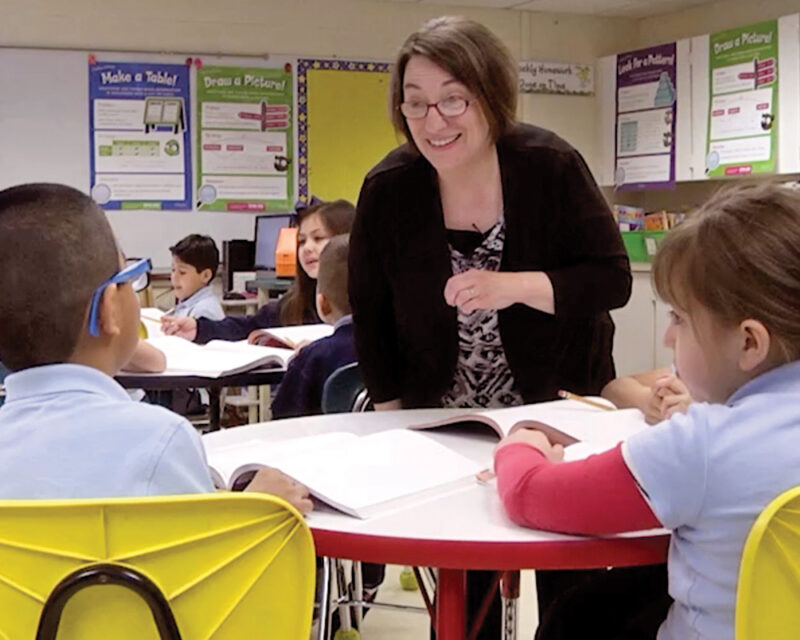Great Ideas
Making the Most of Student Math Journals
You may use a journal to reflect upon your day and to record your thoughts. And when it comes to your students, in all likelihood you ask them to keep a reading journal because you know when they write about what they have read they process the information more thoroughly and think more deeply. Similarly, a math journal gives your students a place to organize, explore their ideas, and solidify their thinking, helping them to make sense of math.
How Do Students Benefit from Math Journals?
Math journals support problem-solving. Research shows that when students write rather than speak about math problems that they improve their understanding of mathematical concepts. Now that’s not to say that we shouldn’t still encourage math discourse, but just that supplementing rich math talk with regular opportunities for students to write about their thinking furthers their math knowledge and helps them cement their learning. Additionally, writing about math problems often leads to new solutions. In fact, many teachers ask students to work on a single open-ended problem for a defined period of time so they have a chance to use several strategies and explore multiple solution paths.
Math journals help organize and clarify thinking. As students work on math problems in their journals, they can test different approaches, use multiple representations, and persevere through struggle as they move toward possible solutions. Working independently in a journal encourages students to pursue novel ideas that they might not be willing to share in front of their classmates. Because math journals are cumulative, students can refer to previous work, helping them make connections across mathematical concepts.
Math journals build math vocabulary. At ORIGO, we believe there is a language progression where students move from everyday language through materials language and only then to mathematical language. And students may use all three in their student journals but writing in a math journal provides students with a low-stakes opportunity to practice using math vocabulary. Research indicates that students who regularly use math journals in elementary school advance their use of math vocabulary and know how to use it appropriately.
Math journals document student growth. A math journal, by definition, is a work in progress. As students move through the year, their journals show how their thinking has developed, their use of strategies has progressed, and their mastery of math concepts has advanced. The journal is a record of each student’s individual experience with math, what approaches they used, what worked, what didn’t, and what they did next based on what they learned. Students can also include personal thoughts on how they feel about math in general, their ability to do math, and their struggles with specific problems. Math journaling allows students to self-assess, see their growth, and own their learning.
One of the major benefits for teachers is that student math journals provide insightful and actionable formative assessment. You can determine each student’s level of understanding, uncover misconceptions, identify opportunities for differentiation, and learn a lot about your students’ relationship with math. As you read student math journals and respond, you provide valuable feedback and develop an ongoing dialogue with each student.
What Goes into a Math Journal?
Math journals can be either physical or digital, and your math curriculum may include student math journals as part of the materials provided, as ORIGO’s Stepping Stones 2.0 program does. Regardless of the type of journal you use:
Provide ample space for students to show their thinking, make mistakes, document multiple approaches, and explore alternate solution paths. Leave room for drawings, charts, graphs, and other visuals. And make sure there is a designated area where you can respond to student thinking, ask questions, and make suggestions for further exploration.
Think about how best to organize content. Do you want to have different sections for problem solving, reflections on learning, feelings about math, or do you want students to group those entries together? How do you want to label journal entries, by date, by topic, by module, a combination? Should you include space at the beginning for a table of contents that can be updated as the journal expands?
Use open-ended problems that require flexible thinking. Students shouldn’t work on every problem in their journal, but rather those problems that provide them with an opportunity to explore and evaluate their ideas. You don’t need to search out new problems, rather select problems from your math program that provide multiple entry points, present various solution paths, require cognitive effort, and demand that students justify their reasoning. You might want to have students work on journal problems at various points throughout a module—especially at the beginning and the end—so that you can determine if they understand the concepts and adjust your instruction accordingly. This approach also allows students to monitor their progress.
Encourage students to record their feelings about math. I’ve written previously about how important it is to help kids develop a positive math identity and writing about their ongoing relationship with math allows students to express their frustration, achievements, fear, and triumphs. As students review journal entries, they’ll see their relationship with math may change—sometimes they feel proud, sometimes they have fun, other times they feel lost or challenged. But regardless, they will learn that they can do math, even though it at times it can be hard. When students write about their relationship with math, you learn more about how to help them on their journey towards becoming competent doers of math.
Ask students to reflect upon their learning. Math journals are a great place for students to record what they have learned. Having students write about what they learned during a module, how their thinking has changed or grown over time, and what they would like to explore further allows students to assess their progress and own their learning.
Consider having students share journal entries. This should always be voluntary and can be anonymous. The benefit of students sharing their thinking, their solutions, and their feelings is that it shows that there are various ways to approach a problem, that there are often multiple solution paths, that everyone struggles at times, that mistakes are learning opportunities, and that math is a creative endeavor that accommodates different ways of thinking. Furthermore, sharing helps hold students accountable and offers them an incentive to truly consider what they write.
Prepare prompts to help students get started and stay on track. Since math journals may perform several jobs—reflections on learning, problem-solving, a record of feelings, etc.—you’ll need different prompts for different journal tasks. We’ve included a list of prompts to get you started.
Make time for students to journal and time for you to review their entries. You can have students journal daily, a couple of times a week, a few times a month, there is no single approach that works in every elementary class. You may decide that in addition to planned journaling times that when students finish their work early, they can write in their journals. Or you might assign journal writing as homework. Most likely you’ll want to establish a set amount of time for journaling. Just make sure that the provided time allows for thinking as well as writing time.
We recommend that you review a couple of journals at a time, so that you can provide thoughtful feedback, as well as note where each student is, identify any misconceptions they might have, and plan differentiated instruction. We don’t think that student journals should be graded as math journals are primarily a place for students to try out new ideas, make mistakes, stretch their thinking, and record their thoughts and feelings.




